calsfoundation@cals.org
Lincoln County
| Region: | Southeast |
| County Seat: | Star City |
| Established: | March 28, 1871 |
| Parent Counties: | Arkansas, Bradley, Desha, Drew, Jefferson |
| Population: | 12,941 (2020 Census) |
| Area: | 559.46 square miles (2020 Census) |
| Historical Population as per the U.S. Census: | |||||||||
|
1810 |
1820 |
1830 |
1840 |
1850 |
1860 |
1870 |
1880 |
1890 |
1900 |
|
– |
– |
– |
– |
– |
– |
– |
9,255 |
10,255 |
13,389 |
|
1910 |
1920 |
1930 |
1940 |
1950 |
1960 |
1970 |
1980 |
1990 |
2000 |
|
15,118 |
18,774 |
20,250 |
19,709 |
17,079 |
14,447 |
12,913 |
13,369 |
13,690 |
14,492 |
|
2010 |
2020 |
|
|
|
|
|
|
|
|
|
14,134 |
12,941 |
|
|
|
|
|
|
|
|
| Population Characteristics as per the 2020 U.S. Census: | ||
| White |
8,324 |
64.3% |
| African American |
3,652 |
28.2% |
| American Indian |
41 |
0.3% |
| Asian |
23 |
0.2% |
| Native Hawaiian or Other Pacific Islander |
9 |
0.1% |
| Some Other Race |
384 |
3.0% |
| Two or More Races |
508 |
3.9% |
| Hispanic Origin |
619 |
4.8% |
| Population Density |
23.1 people per square mile |
|
| Median Household Income (2019) |
$46,596 |
|
| Per Capita Income (2015–2019) |
$14,764 |
|
| Percent of Population below Poverty Line (2019) |
20.0% |
|
Lincoln County lies in southeastern Arkansas, bordered on the northeast by the Arkansas River. Bayou Bartholomew bisects the county from northwest to southeast, dividing the land between the bottomland of the Mississippi Alluvial Plain (the Delta) to the east and the Coastal Plain. The mainstay of the economy is agriculture.
Louisiana Purchase through Early Statehood
By the time of European exploration and settlement, very few Native Americans lived in Lincoln County, though the Quapaw technically owned the land that is now Lincoln County. County histories indicate the possible existence of a Quapaw village near the Arkansas River on land that was later settled by the McLain, Lee, and Douglass families, who established homes there in 1827 in a community called Auburn (known later as Douglass Landing). Thomas Griffith bought land in 1836 at what is now Griffith Springs and built a cotton gin. John S. Hall and his family arrived in 1846 from South Carolina and established Hall’s Station, which is now the town of Grady. Eli King Haynes (whose name is rendered in some sources as Elias King Hays) arrived from Tennessee in May 1847 and established Cornerville (a.k.a. Cornersville) in southwestern Lincoln County.
Slave labor was common in what is now Lincoln County. For instance, Dr. John A. Jordan of Tennessee bought a great deal of land from Frenchman Joseph Deruisseaux in the 1840s and staffed it with slaves purchased in New Orleans, creating what was called Southbend Plantation. He began the construction of a stately manor house in 1854 using enslaved workers.
Civil War through Reconstruction
Though many residents joined the Confederate cause, there were very few military actions in the area. The January 19, 1864, Skirmish at Branchville took place when Union colonel Powell Clayton led the Fifth Kansas, First Indiana, and Seventh Missouri cavalries south from Pine Bluff (Jefferson County) with the intention of proceeding toward Monticello (Drew County). However, he encountered a Confederate encampment at Branchville, about ten miles southwest of what is now Star City. He was able to drive the enemy two miles from their camp, at which point the Confederates ceased firing and withdrew. Two Union soldiers were killed, and from five to sixteen Confederates were reported slain. Low on ammunition, Clayton led his soldiers back to Pine Bluff for the night. Scouting parties of both armies traversed the county frequently, confiscating goods for military use.
Erected in 1926, the Star City Confederate Memorial commemorates soldiers who fought for the Confederate cause. It stands at the site of the 1911 courthouse, which was replaced by the current courthouse in 1943.
Lincoln County was created from portions of Arkansas, Bradley, Desha, Drew, and Jefferson counties on March 28, 1871, by an act of the Reconstruction-era Arkansas General Assembly. It was named after the late president Abraham Lincoln. The county court first met at Cane Creek Church on April 24, 1871. The site of what later became Star City was selected as the permanent county seat despite not being in the most central position. The first circuit court term was held in the fall of 1871.
By February 1873, the Little Rock, Pine Bluff, and New Orleans Railroad was completed to the present-day site of Varner. Other towns, such as Grady and Gould, grew up along the railroad, becoming important centers of commerce. However, by 1890, Star City remained the only incorporated town in the county, with Gould and Grady not incorporating until the early twentieth century.
Post Reconstruction through the Gilded Age
A part of Lincoln County was transferred to Desha County on March 10, 1879. A wooden courthouse was built in 1880 and used until 1910, when the court moved to a modern brick building. On April 9, 1885, the state legislature split the county into two judicial districts, the Star City district and the Varner district; however, the Varner courthouse was closed around 1912.
Lincoln County’s first newspaper was the Lincoln County Herald, published in 1875. It soon failed. On January 1, 1880, Judge Alfred Wiley launched the Lincoln Lance, which was bought in 1887 by T. E. and R. H. Hammock, who changed the name to the Lincoln Ledger.
The county has experienced numerous incidents of racial violence, including the lynching of an African American man named Sharpe McNeil in 1881. George Harris lost his life in 1892 for the alleged murder of a white man the previous year. In 1893, John Cotton was killed after being accused of allegedly attacking a white woman. Killed in 1910, William Hunter was accused of entering the bedroom of a white woman during the night. Two lynchings took place in 1919, with Clyde Ellison lynched in June for allegedly attacking a white woman (though this may have been a cover story for the real motivation) and returned World War I soldier Clinton Briggs murdered in September for allegedly insulting a white woman.
Early Twentieth Century
The area that is now Gould was known in the early 1900s as Palmers Switch or Joslyn Post Office and was primarily a swamp. However, the railroad resulted in the growth of the area. George H. Joslyn Sr. served as the postmaster of the post office, which was established in 1904. He was succeeded by his son. The Joslyns were among those who led a petition for the incorporation of the emerging town; the petition was presented to the Lincoln County Court on August 6, 1907, and the town was named Gould for capitalist Jay Gould. The Gould Southwestern Railroad later connected Gould to Star City; that line opened on January 6, 1909, and operated for fifty years.
The Flood of 1927 hit the county hard, especially as floodwaters from the Mississippi River backed up into both the Arkansas River and Bayou Bartholomew, inundating much of the farmland. Though there were no Red Cross relief camps in Lincoln County itself, they proliferated in nearby Drew, Desha, Arkansas, and Jefferson counties. The Drought of 1930–1931 destroyed the county’s cotton crop. Small communities such as Cornerville were unable to overcome such hits and began dwindling in population rapidly. The Farm Security Administration in 1936 bought the plantation of Elmer Pierpont Ladd as part of a resettlement program for displaced farmers, dividing the land into sixty-acre lots and operating it as a cooperative.
World War II through the Modern Era
Grider Army Air Field was established in early 1941 in Pine Bluff to provide aviation training to U.S. Army Air Forces cadets during World War II. However, by the following year, the number of students had grown so high that the facility had to be expanded. It leased 320 acres outside of Grady for the creation of Matthews Field, which operated until the spring of 1944.
Grady also had a prisoner-of-war camp housing German soldiers. The prisoners reportedly contributed greatly to the economy, working to bring in Lincoln County’s cotton crop in 1944 and 1945 at a time when many agricultural workers were in the armed services.
Lincoln County had several small schools for African American children but no school that went beyond the eighth grade until 1949, when Lincoln High School was established in Star City through the consolidation of ten smaller schools in and around the county seat. In its first year, classes went only up to the ninth grade, but with each passing year, an additional grade was included until it finally provided all twelve years of education. Despite shortcomings in terms of instructional materials and supplies (typical of how the state funded Black schools at the time), the school managed to provide a good instructional program and various extracurricular activities and even built a new elementary school in 1963. Lincoln High School closed in 1970 as a result of desegregation, with all its students being transferred to the Star City School District.
Gould was one of the sites chosen in the early 1960s by the Student Nonviolent Coordinating Committee (SNCC) as the site for a regional office to facilitate racial justice in rural Arkansas. Summer volunteers with SNCC forced two restaurants in the town to integrate, but the organization faced massive resistance from the white power structure. In a 1965 school board election, Black candidates lost decidedly, a result widely attributed to election fraud given that African Americans made up eighty-two percent of the town’s voting population. Black parents in Gould formed their own Parent-Teacher Association but were locked out of the high school. Police in Gould regularly harassed and threatened both Black and white activists. In September 1967, the Gould School District was finally integrated through a “Freedom of Choice” plan, although this was later deemed to be token integration rather than a full-fledged effort to desegregate. The 1968 U.S. Supreme Court case of Raney v. Board of Education found that the plan implemented was inadequate and remanded the case to lower courts to allow African American parents to continue their efforts to desegregate completely. Those who opposed desegregation established their own private academy. One notable civil rights worker operating in the area was Lincoln County native Ethel Dawson, and civil rights activist Ozell Sutton, who served in Governor Winthrop Rockefeller’s administration, was born near Gould.
Carnell Russ, an African American resident of Monticello, was stopped for speeding in Yorktown on May 31, 1971. He was taken to the Star City Jail to pay a bond, and events led to his killing by a white Star City police officer. Found not guilty of a charge of voluntary manslaughter, the police officer was found liable for Russ’s death eight years after the incident.
Lincoln County’s population has never recovered to its earlier levels, due to several factors, most notably the mechanization of agriculture. In the twenty-first century, the county faces many of the same problems as other counties in the Delta, especially poverty and lack of economic and educational advancement.
Industry
Agriculture is the foundation of Lincoln County’s economy, with cotton being one of the most historically important crops. Noteworthy in the early twenty-first century has been Hardin Farms, a family farm (operated for years by politician Joe Hardin) that became a leader in sustainable agriculture and the farmers’ market movement. Carpenter’s Produce is an African American–owned farming operation that supplies fruits and vegetables to regional and national retailers. The abundance of lumber in the county also made it a center of the timber industry, especially as land was cleared for agricultural use. Star City alone, nearly since its inception, had saw mills; the town was also home to flooring, stave, chip, and handle mills, as well as a pallet plant. The small town of Cornerville had several sawmills in the early twentieth century.
The Arkansas Department of Correction is one of the major employers in Lincoln County, with the Cummins and Varner units both located outside of Grady. Cummins, a 1,725-bed maximum security unit, was founded as the Cummins State Prison Farm in 1902 and long was notorious as one of the nation’s worst prisons. A mass escape took place in 1940 with thirty-six men fleeing after killing a trusty guard, claiming they took the action to escape the inhumane conditions at the prison. U.S. District Judge J. Smith Henley ruled in Holt v. Sarver that conditions at Cummins violated the U.S. Constitution’s prohibition against cruel and unusual punishment and ordered the state to reform or close it. A short-lived strike took place in 1974 to continue to protest the conditions at the prison.
The Varner Unit, established in 1987, is a maximum-security facility. Death row inmates are housed at Varner but transported to Cummins for execution. The COVID-19 pandemic struck the prisons, with thousands of inmates and staff contracting the disease. The Cummins Unit became the densest hotspot of cases in the country.
Attractions
Cane Creek State Park, just east of Star City, opened on May 18, 1992, as part of an initiative to enhance recreational opportunities in southeast Arkansas. The park, located at the confluence of the Delta and the West Gulf Coastal Plain, where Cane Creek empties into Bayou Bartholomew, provides for boating, fishing, and hiking.
Lincoln County has several properties on the National Register of Historic Places, including the Star City Commercial Historic District and the Crow House, a circa 1873 dogtrot house.
For additional information:
Finley, Randy. “Crossing the White Line: SNCC in Three Delta Towns, 1963–1967.” Arkansas Historical Quarterly 65 (Summer 2006): 117–137.
History of Lincoln County, Arkansas, 1871–1983. Dallas, TX: Taylor Publishing Company, 1983.
Lincoln County, Arkansas. http://county.arkansas.gov/lincoln (accessed April 27, 2022).
Lincoln County, Arkansas, Digital Museum. http://lincolncountyarmuseum.omeka.net/home (accessed April 27, 2022).
Pierce, Michael. “‘Boss Man Tell Us to Get North’: Mexican Labor and Black Migration in Lincoln County, Arkansas, 1948–1955.” In Race, Labor, and Violence in the Delta: Essays to Mark the Centennial of the Elaine Massacre, edited by Michael Pierce and Calvin White. Fayetteville: University of Arkansas Press, 2022.
Staff of the CALS Encyclopedia of Arkansas
Revised 2022, David Sesser, Southeastern Louisiana University
 Lincoln County Courthouse
Lincoln County Courthouse Palmyra (Lincoln County)
Palmyra (Lincoln County) Yorktown (Lincoln County)
Yorktown (Lincoln County) Cane Creek State Park
Cane Creek State Park  Entering Crigler
Entering Crigler  Entering Meroney
Entering Meroney  Irrigation Systems
Irrigation Systems  Benjamin Laney
Benjamin Laney 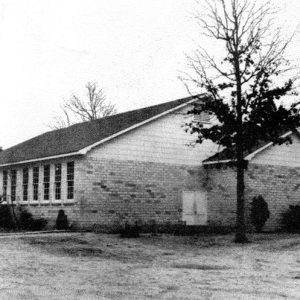 Lincoln High School
Lincoln High School  Lincoln County Courthouse
Lincoln County Courthouse  Lincoln County Map
Lincoln County Map  Abraham Lincoln
Abraham Lincoln 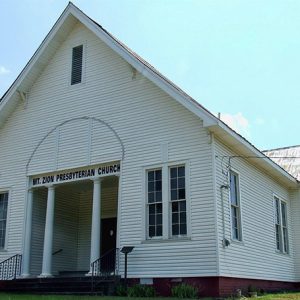 Mt. Zion Presbyterian
Mt. Zion Presbyterian 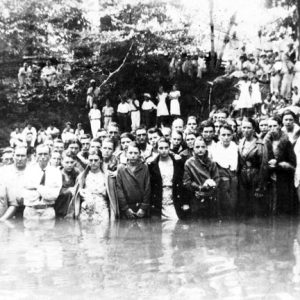 Star City Baptism
Star City Baptism 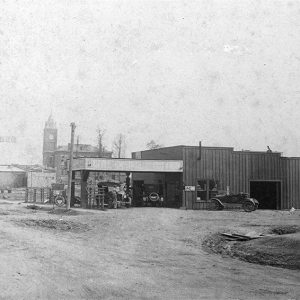 Tarry Street Scene
Tarry Street Scene 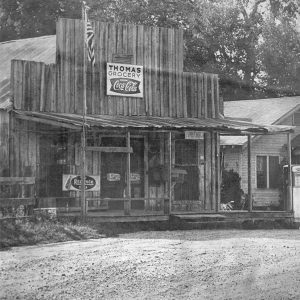 Thomas Grocery
Thomas Grocery 




Comments
No comments on this entry yet.